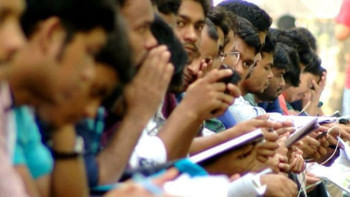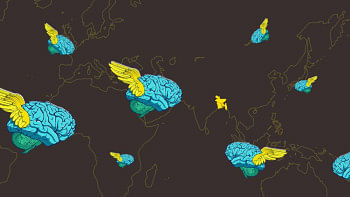Young people need more economic opportunities

As per the latest census, Bangladesh's youth population has increased by 15.81 percent to 4.59 crore over the last decade. This has provided the country with a great opportunity to make the most of what is known as "demographic dividend", an economic growth potential that can result from shifts in a population's age structure, mainly when the share of the working-age population (15 to 64) is larger than that of the non-working-age population (14 and younger, and 65 and older). What is unfortunate, however, is that till now Bangladesh has largely failed to utilise this once-in-a-lifetime window of demographic dividend due to its inability to create jobs and other opportunities for them to flourish.
One may recall that in 2018, the International Labour Organization (ILO) ranked Bangladesh second out of 28 countries in the Asia-Pacific region for having the highest rate of educated unemployment. The ILO also estimated that between 2010 to 2017 – close to the same period when Bangladesh's youth population increased – the rate of youth unemployment had doubled. Before releasing the most recent Labour Force Survey 2022 (where, unbelievably, Bangladesh was shown as having the lowest unemployment rate in South Asia), the government's last survey on the labour force came out in 2016-17, which also showed a lack of seriousness on part of the authorities to address issues related to unemployment. In that survey, it was also seen that the youth unemployment rate stood at more than double the national unemployment rate, with the rate being higher among the more educated youth. For example, unemployment rate was 13.4 percent among youths having a tertiary-level education and 29.8 percent among youths having secondary-level education.
There has been little change in this scenario since then, with recent reports highlighting their continued struggle.
Experts have pointed out that the "economic miracles" experienced by Hong Kong, Singapore, South Korea and Taiwan between the early 1960s and 1990s, and the economic boom witnessed by Ireland in the 1990s, were all down to the utilisation of their respective demographic dividends. For Bangladesh, this window is expected to close within the next decade or two. If we are to take advantage of it to propel the nation forward, then the government has to do much more in terms of creating jobs and overall opportunities for young people.
At the same time, it is important to keep in mind that having such a large group of young people could prove to be a double-edged sword. Along our current trajectory, where the youth are basically being starved off opportunities, they might become increasingly frustrated and disillusioned. In the absence of opportunities to contribute to the nation and society, or to improve their own lives, where are these young people supposed to channel their energy? It might well be towards criminal activities that may exert tremendous pressure on the country, which will worsen our economic and societal outcomes. Therefore, it is high time the government formulated a holistic strategy to provide the best opportunities for our young citizens.


 For all latest news, follow The Daily Star's Google News channel.
For all latest news, follow The Daily Star's Google News channel. 








Comments